Moderate overlap front: original test
Rating applies to 2008-10 models
Tested vehicle: 2008 Smart Fortwo Pure 2-door
The Smart Fortwo was introduced in the 2008 model year. As its name implies, the Smart accommodates only two people; there is no rear seat.
| Evaluation criteria | Rating |
|---|---|
| Overall evaluation | |
| Structure and safety cage | |
| Driver injury measures | |
| Head/neck | |
| Chest | |
| Leg/foot, left | |
| Leg/foot, right | |
| Driver restraints and dummy kinematics | |
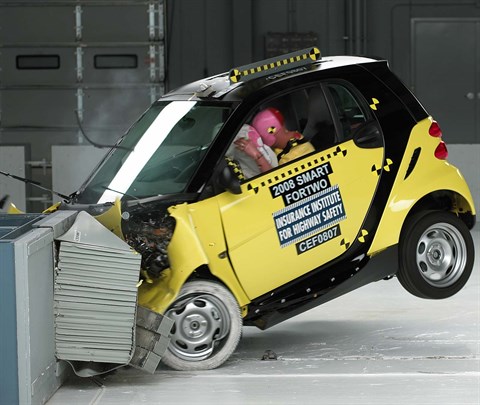
Action shot taken during the frontal offset crash test.
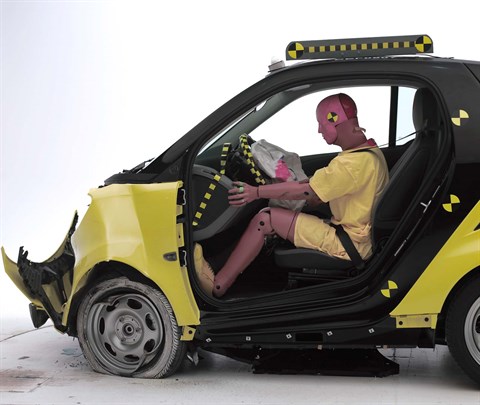
The dummy's position in relation to the steering wheel and instrument panel after the crash test indicates that the driver's survival space was maintained very well.
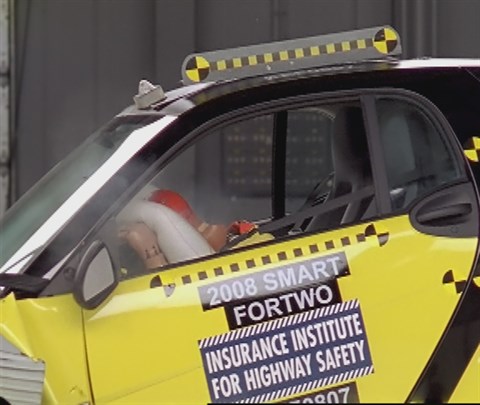
Forces on the dummy's head were high when it hit the steering wheel through the airbag.
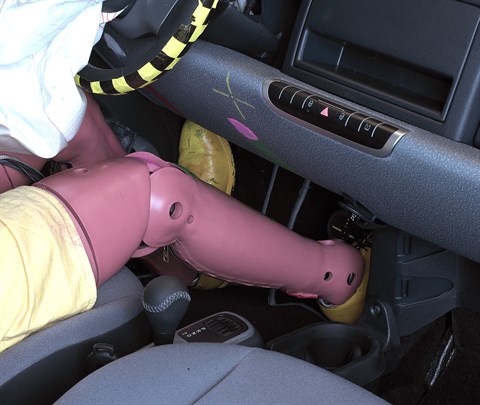
Forces on the right lower leg were high enough to indicate the possibility of injuries.
Side: original test
Rating applies to 2008-10 models
Tested vehicle: 2008 Smart Fortwo Pure 2-door with standard front seat-mounted combination head and torso airbags
The Smart Fortwo was introduced in the 2008 model year. As its name implies, the Smart accommodates only two people; there is no rear seat.
During the crash, the driver door unlatched. This opening didn't significantly affect dummy movement during the test but shouldn't happen because, in some crashes, it could allow partial or complete occupant ejection, especially if the occupant is unbelted. This door opening resulted in a structure rating downgrade from good to acceptable.
| Evaluation criteria | Rating |
|---|---|
| Overall evaluation | |
| Structure and safety cage | |
| Driver injury measures | |
| Head/neck | |
| Torso | |
| Pelvis/leg | |
| Driver head protection | |
| Rear passenger injury measures | |
| Head/neck | |
| Torso | |
| Pelvis/leg | |
| Rear passenger head protection | |
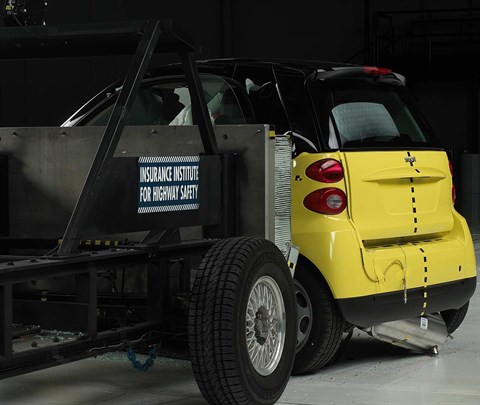
View of the vehicle and barrier just after the crash test.
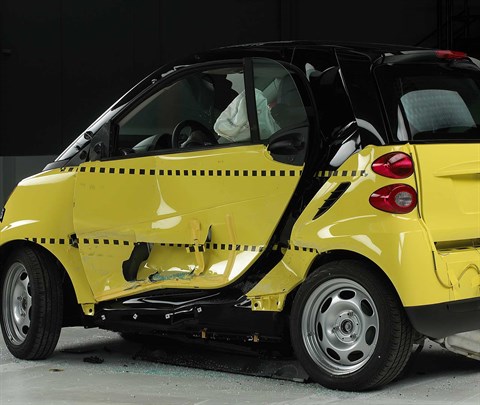
View of the vehicle after the crash showing the unlatched driver door after the barrier was moved away.
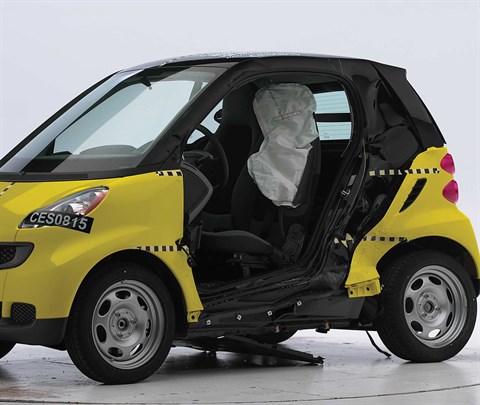
View of the vehicle after the crash with door removed, showing the side airbag and damage to the occupant compartment.

Smeared greasepaint shows where the driver dummy's head was protected from being hit by hard structures by the side airbag.
Roof strength
Rating applies to 2008-15 models
Tested vehicle: 2009 Smart Fortwo Pure 2-door
| Overall evaluation | |
|---|---|
| Curb weight | 1,828 lbs |
| Peak force | 9,896 lbs |
| Strength-to-weight ratio | 5.41 |
Head restraints & seats
Seat type: Manual cloth seats
| Overall evaluation | |
|---|---|
| Dynamic rating | |
| Seat/head restraint geometry |
About the head restraint & seat test
Currently, IIHS tests apply only to front seats.
